Pernille Ripp's Blog, page 41
June 23, 2017
Ten Tools for Changing the Grading Conversation
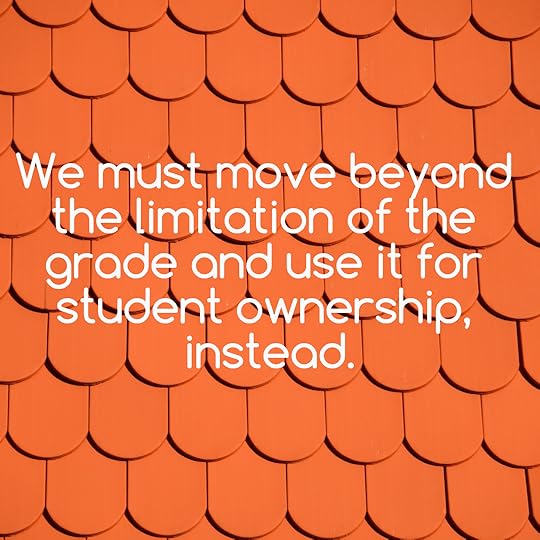
While I have tried to move away from giving grades over the last seven years, I have been a failure at it. Those pesky numbers or letters keep popping up in our classroom, whether I want them to or not. That seems to be what happens when you work within a public school system that has made the grading decision for you. For the past seven years, I have written about how to move away from grades, but what if that is not an option? What if grades are a part of your duties and you have to give them no matter what? And let’s face it; assessing students through grades is easy; put a number/letter on it and it tells the whole story for you, or so we think. Put a number/letter on it and surely a child, or a parent, will know exactly what we are communicating and how they are doing. And yet, that is not what happens within most traditional grading; kids don’t know why they get what they get, they feel they have no control, and parents aren’t aware of the full story.
I have to come realize that while I can pine for a gradeless system, where we do not place children into such boxes, in the meantime I can work within the confinement currently presented and change the conversation itself. So rather than focus on trying to remove grades completely, I can make sure that the ones I am in charge of giving are actually meaningful, as well as controlled by the students, providing us with another tool for giving the learning back to the students.
We start by breaking down our learning targets whenever possible, and while this sounds incredibly formal, it is more of a pointed conversation. What are we learning and why are we learning it are questions that students should be able to answer, even if the answer to why is to be better human beings. Students have a hard time taking ownership over their learning process if they have no clue where they are headed.
We then discuss ways to get there. As often as possible, students need have to different pathways to reach their learning goals. While full personalization of product would be lovely, I am not able to provide that for my students at all times. We then look to the five tenets of choice as ways to incorporate more personalization.
Students must know themselves. We have two central questions we pursue as an English class all year; who am I as a reader and who am I as a writer? Both of these lead to the self-reflection and discovery that students undertake. After all, I need each child to know themselves well enough to know how they actually need to grow and also to find the motivation to become better. That will not happen if I make the same goal for each child. It is also telling that many of my most resistant learners do not know who they are as learners. How can we expect them to grow if they don’t even know who they are?
We know what the end assessment will be. We have to discuss with students and help them understand what our grade level work reads like or presents itself as, otherwise we are asking students to shoot their learning into the dark and hope it sticks somewhere. So actual student examples, modeling, and shared conversations have to be present during our learning as guides to the students. Make it accessible without your direction so they can access it at any time.
We change our language. Two years ago I adopted the “Best draft” terminology from Kelly Gallagher and have not looked back. Often students will hand in their “best draft” rather than their final product. Final product means exactly that; final, no need to revise, revisit, or rethink. But “best draft” means that it is unfinished, that there is still work to be done, that even if the assessment is attached to it, it is preliminary at best and can be molded by their own efforts to change their learning product.
Students assess themselves first. For big projects, (and I need to do it more) I will not assess it unless a child has first. Otherwise, my voice is what they will conform to rather than their own reflection on where they are on the learning journey. I need them to do the hard thinking work of breaking down their own skills and then seeing what their strengths are and how they need to grow further. They, therefore, need to understand the rubric, the terminology used, as well as how they CAN grow.
They come up with a next step. While I focus my feedback on the one next step, they also need to focus on what they are working on next and how else they will grow. It is not enough for them to place themselves into an assessment category and then do nothing about it. Every child needs to set the next step goal for themselves and then come up with a tangible plan to pursue it. This will be a major focus for me next year as I am still trying to figure out how to do this best with teaching 130+ students.
They direct their learning. Part of our learning journey is figuring out how they learn best within the confinements of our time, our environment, and the curriculum we do need to explore. So who do they work best and where in the room do they work best are parts of their self-assessments, not just a number or a letter grade.
They take ownership over their assessment. While the number (we are standards based) is not the description of them as a learner, it becomes part of our conversation. We must go beyond handing out numbers or letters so that students can understand what it means to create work that is at a “2” or a “3” and then move beyond that even. Making the number or letter something that is in control of the students changes their own classification. No child is a “2” in our classroom, the specific work may be at a “2” level; there is a big difference there.
They want more. My students know that their score, which is often selected by themselves, is just a part of their assessment because they are consistently provided with feedback either through a rubric, written out, or a conversation. Very rarely, except for on our spelling packets, are they just given a score with no further explanation. That means that they know that the number is merely a symbol of something larger and not the only designator. They know that there is more to the story. In fact, they get so used to this that if feedback or reflection opportunity is not provided that they ask for further clarification. This is an indicator, in my eyes, that they see how little the actual number/letter symbolizes and need more information.
The thing is with grades, they are a tool like any other. It is when we let them dominate our conversation when they become the only thing we discuss that we lose kids in the process. Grades were not meant to be easy, they are meant to be a conversation starter and so it is up to us to start having those conversations if we want students to truly have ownership over their own learning journey.
If you like what you read here, consider reading any of my books; the newest called Reimagining Literacy Through Global Collaboration, a how-to guide for those who would like to infuse global collaboration into their curriculum, was just released. I am currently working on a new literacy book, called Passionate Readers and it will be published in the summer of 2017 by Routledge.If you are looking for solutions and ideas for how to re-engage all of your students consider reading my very first book Passionate Learners – How to Engage and Empower Your Students. Also, if you are wondering where I will be in the coming year or would like to have me speak, please see this page.
Filed under: being a teacher, grades, No grades, student choice, student driven, Student Engagement, student voice


Tools for Changing the Grading Conversation

While I have tried to move away from giving grades over the last seven years, I have been a failure at it. Those pesky numbers or letters keep popping up in our classroom, whether I want them to or not. That seems to be what happens when you work within a public school system that has made the grading decision for you. And let’s face it; assessing students through grades is easy; put a number/letter on it and it tells the whole story for you, or so we think. Put a number/letter on it and surely a child, or a parent, will know exactly what we are communicating and how they are doing. And yet, that is not what happens within most traditional grading; kids don’t know why they get what they get, they feel they have no control, and parents aren’t aware of the full story.
I have to come realize that while I can pine for a gradeless system, where we do not place children into such boxes, in the meantime I can work within the confinement currently presented and change the conversation itself. So rather than focus on trying to remove grades completely, I can make sure that the ones I am in charge of giving are actually meaningful, as well as controlled by the students, providing us with another tool for giving the learning back to the students.
We start by breaking down our learning targets whenever possible, and while this sounds incredibly formal, it is more of a pointed conversation. What are we learning and why are we learning it are questions that students should be able to answer, even if the answer to why is to be better human beings. Students have a hard time taking ownership over their learning process if they have no clue where they are headed.
We then discuss ways to get there. As often as possible, students need have to different pathways to reach their learning goals. While full personalization of product would be lovely, I am not able to provide that for my students at all times. We then look to the five tenets of choice as ways to incorporate more personalization.
Students must know themselves. We have two central questions we pursue as an English class all year; who am I as a reader and who am I as a writer? Both of these lead to the self-reflection and discovery that students undertake. After all, I need each child to know themselves well enough to know how they actually need to grow and also to find the motivation to become better. That will not happen if I make the same goal for each child. It is also telling that many of my most resistant learners do not know who they are as learners. How can we expect them to grow if they don’t even know who they are?
We know what the end assessment will be. We have to discuss with students and help them understand what our grade level work reads like or presents itself as, otherwise we are asking students to shoot their learning into the dark and hope it sticks somewhere. So actual student examples, modeling, and shared conversations have to be present during our learning as guides to the students. Make it accessible without your direction so they can access it at any time.
We change our language. Two years ago I adopted the “Best draft” terminology from Kelly Gallagher and have not looked back. Often students will hand in their “best draft” rather than their final product. Final product means exactly that; final, no need to revise, revisit, or rethink. But “best draft” means that it is unfinished, that there is still work to be done, that even if the assessment is attached to it, it is preliminary at best and can be molded by their own efforts to change their learning product.
Students assess themselves first. For big projects, (and I need to do it more) I will not assess it unless a child has first. Otherwise, my voice is what they will conform to rather than their own reflection on where they are on the learning journey. I need them to do the hard thinking work of breaking down their own skills and then seeing what their strengths are and how they need to grow further. They, therefore, need to understand the rubric, the terminology used, as well as how they CAN grow.
They come up with a next step. While I focus my feedback on the one next step, they also need to focus on what they are working on next and how else they will grow. It is not enough for them to place themselves into an assessment category and then do nothing about it. Every child needs to set the next step goal for themselves and then come up with a tangible plan to pursue it. This will be a major focus for me next year as I am still trying to figure out how to do this best with teaching 130+ students.
They direct their learning. Part of our learning journey is figuring out how they learn best within the confinements of our time, our environment, and the curriculum we do need to explore. So who do they work best and where in the room do they work best are parts of their self-assessments, not just a number or a letter grade.
They take ownership over their assessment. While the number (we are standards based) is not the description of them as a learner, it becomes part of our conversation. We must go beyond handing out numbers or letters so that students can understand what it means to create work that is at a “2” or a “3” and then move beyond that even. Making the number or letter something that is in control of the students changes their own classification. No child is a “2” in our classroom, the specific work may be at a “2” level; there is a big difference there.
They want more. My students know that their score, which is often selected by themselves, is just a part of their assessment because they are consistently provided with feedback either through a rubric, written out, or a conversation. Very rarely, except for on our spelling packets, are they just given a score with no further explanation. That means that they know that the number is merely a symbol of something larger and not the only designator. They know that there is more to the story. In fact, they get so used to this that if feedback or reflection opportunity is not provided that they ask for further clarification. This is an indicator, in my eyes, that they see how little the actual number/letter symbolizes and need more information.
The thing is with grades, they are a tool like any other. It is when we let them dominate our conversation when they become the only thing we discuss that we lose kids in the process. Grades were not meant to be easy, they are meant to be a conversation starter and so it is up to us to start having those conversations if we want students to truly have ownership over their own learning journey.
If you like what you read here, consider reading any of my books; the newest called Reimagining Literacy Through Global Collaboration, a how-to guide for those who would like to infuse global collaboration into their curriculum, was just released. I am currently working on a new literacy book, called Passionate Readers and it will be published in the summer of 2017 by Routledge.If you are looking for solutions and ideas for how to re-engage all of your students consider reading my very first book Passionate Learners – How to Engage and Empower Your Students. Also, if you are wondering where I will be in the coming year or would like to have me speak, please see this page.
Filed under: being a teacher, grades, No grades, student choice, student driven, Student Engagement, student voice


June 18, 2017
Giving and Receiving Feedback So It Doesn’t Hurt
Feedback. At times even just the word is enough to elicit shudders, at other times, it is met with a shrug. How we react depends on many things; our state of mind, our relationship with the person providing the feedback, the subject matter, and even the approach. Sometimes the right piece of feedback transforms, other times it wounds. And yet, feedback is a major part of being an educator. Learning how to approach it, how to use it, and how to grow from it are all essential parts of being a better educator. Knowing that feedback is inevitable, that we are meant to use it, and also that we do control one thing in the process; ourselves, I have a few ideas that may make receiving (and providing) feedback a better process for everyone involved.
If you are on the receiving end…
Listen with an open mind. This is easier said than done, but one way I try to approach it is by reminding myself that feedback allows me to grow, but in order for me to grow, I have to first hear it. That means that when someone is providing me with feedback, I focus on actually hearing it. Not just picking up on a few things and then getting stuck on them. A tip is to repeat what has just been said, such as by saying, “What I am hearing you say is…” that way you can fine tune what is being said and in case there is a misunderstanding, it can be cleared up right away.
Assess the situation. Is this scheduled feedback from someone who has to evaluate you or is this drop-by feedback from anyone? We all know that much depends on the actual situation and that feedback can be tainted by emotion and circumstance. So if you are sitting in a formal evaluation, know that providing you feedback is part of that evaluator’s job and that everyone has something to grow on. If the feedback is coming from an unexpected source and seems to be an attempt to make you grow in an unexpected way, approach it from a conversation starting angle. A tip is to ask questions, such, “How would you approach the situation?” or “Can you provide more details in order for me to understand?” That way you can gather a larger scope of why the feedback is being given.
Take a breath. Too often, our haunches come up when we are given feedback. Being an educator is a deeply personal mission and so we all go in there trying our best every single day. When someone points out an area of growth for us, it is hard not to take offense Yet, this is exactly the opposite of what we should do. Instead, thank the person for providing you with the feedback and then take a moment. Just because feedback is given does not mean you must have an immediate response to it. Offer to get back to the person once you have some time to digest, or simply explain that you need some time. Sometimes feedback can really hurt, it is okay to have these emotions, but what is not ok is to get stuck there. That is why my next tip is to explore the emotions that have occurred.
Search for the source of hurt. If the feedback hurts or is upsetting in some way, allow yourself to feel that way, but do take some time to reflect; why does this hurt? Why is it upsetting to you? Is it because you were unaware of needing to grow in this area or is it because of how it was delivered. Often times, it is not the actual feedback that causes big emotions but everything else we add to the situation. Do you trust the person giving it to you? If not, why not? Do you understand why it has been given? Do you understand the bigger picture? Is the feedback really directed toward just your practice or is it because you are part of the bigger picture? If you feel the feedback is meant to hurt you then ask clarifying questions, never assume as it may cause further damage down the road.
Share to process, not to vent. Often times, we end up venting without wanting to hear solutions. While there is definitely a time and place in education for venting when it comes to feedback, a much better approach is to share it with a trusted colleague to get their perspective and wisdom, rather than just their solidarity. Often times, because they are not emotionally attached to the situation, they can provide us with a new lens and help us see the bigger picture, rather than just the parts that may be upsetting.
Come up with a next step. Once you have allowed yourself to process the feedback, decide on your next step. How will you actually grow as a practitioner? Even the most hurtful feedback can cause great reflection so no matter what, find out how to use it. I have found that the more tangible of a step I can come up with, the better because I then feel like I am doing something about it. So when a child tells me they hate reading, or a parent is disappointed in me, or someone I work with tells me I need to change a part of my teaching, I think of how it allows me to focus on that aspect of my teaching and get better at it. Once I then implement the next step I feel like I can continue on my journey.
Realize we all need to grow. There is no such thing as a perfect teacher, yet many of us think we have to be one. Feedback can, therefore, be viewed in a deficit mindset where we assume that we are poor teachers, rather than ones that are growing. So instead, realize that to have great days we also need to have days, or moments, where we hit rock bottom or worry that we are not enough. While feedback that is meant to help us grow can sometimes knock us down, we are the ones that decide how to approach it, and ultimately, what we can use it for. You can let it matter in a positive way, realizing that whatever was remarked upon is now an area you can grow in, or you can become angry and shrug it off. Ultimately how you approach it is your choice, so why not use it for good.
Finally; ask for specific feedback. If you are unsure about a person’s intentions or you feel particularly vulnerable, instead of waiting for feedback ask for it. This also works really well as a simple step toward better teaching. Whenever I am observed I ask for certain things to be evaluated because these are things I know I need to grow on. This offers those observing a lens with which to view me through, as well, as a way for me to have some sort of input in the process. When I am given feedback on specific things and then offered other feedback it is much easier to approach it as a package of growth rather than as a sign of failure.
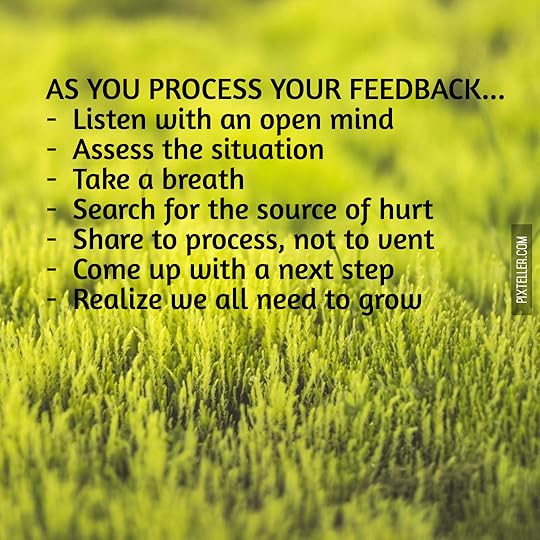
If you are on the giving end…
Relationship trumps all. Sometimes the hardest feedback comes from those we trust the most, therefore spending time building trust and professional community always pays off in the long run.
Think of timing. If you have something harder to discuss, think about when during the day would be best to give it. It is really hard to receive feedback that pushes you to grow right before you have to go teach a class.
Ask for it to be restated. Make sure that the person receiving the feedback actually understands it. While I don’t mean to have them repeat it back to you, simply asking; “What does this mean to you?” or “How does this fit into your growth plan?” is a great way to check for understanding.
Find the right method. Sometimes feedback needs to be given but not from you. If you know that feedback will be taken a certain way because of your position, then see if there is another way it can be given. Sometimes feedback is given through professional opportunities rather than direct conversation.
Speak the truth. Sometimes hard conversations need to be had, there is no way around it, therefore speaking the truth, keeping it human, and trying to focus it as a professional growth opportunity, rather than a personal attack, is the only way to do it. Acknowledging that certain feedback can be really hard to hear can sometimes undo a lot of resentment.
Check yourself. Is this feedback given in the right framework or even in the right spirit? Sometimes we are so eager to provide ideas for others that we forget about how it can feel to receive it. So make sure that when you do provide feedback to someone that it will actually be worth the potential hurt or discomfort it may cause. If not, reflect; why do you feel the feedback needs to be given?
Know the full story. I have been given unsolicited feedback where it was clear that assumptions were at play rather than a true understanding of what was going on. This can lead to some really painful conversations and even to a lot of confusion. So ask questions straight to the person before you offer up any feedback. Make sure you actually know more than you think you know.
While feedback can be viewed as hurtful, it can also be an incredible source of growth. What matters is how we approach it, the time we are given to process it, and the tangible things we can then do. May this be of help in the process.
If you like what you read here, consider reading any of my books; the newest called Reimagining Literacy Through Global Collaboration, a how-to guide for those who would like to infuse global collaboration into their curriculum, was just released. I am currently working on a new literacy book, called Passionate Readers and it will be published in the summer of 2017 by Routledge.If you are looking for solutions and ideas for how to re-engage all of your students consider reading my very first book Passionate Learners – How to Engage and Empower Your Students. Also, if you are wondering where I will be in the coming year or would like to have me speak, please see this page.
Filed under: being a teacher, grow


June 9, 2017
Does Reading for Pleasure in Schools Really Make a Difference?
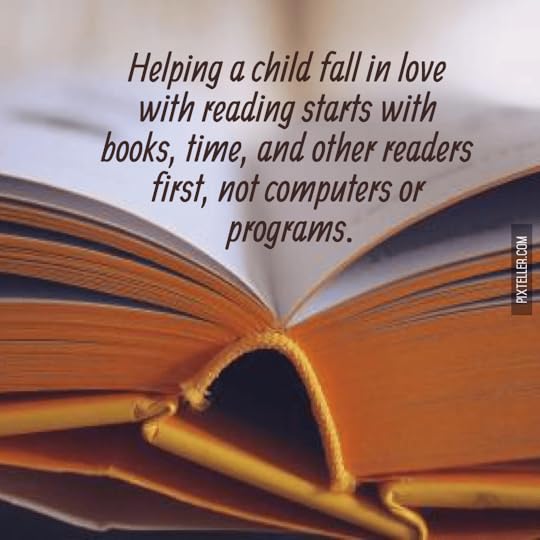
Sometimes we are up against insurmountable odds without even knowing it. Odds that seem to already be against us. Facing conditions that are no fault of our own, and yet, we are the ones that are supposed to change it.
Often this can be how teaching feels. Like we are not just teachers of content, but instead, also the frontline for changing how students feel about school, feel about teachers, feel about anything that may happen within our days together. There are many things that my middle schoolers have taught me, but one of the biggest lessons is that it is not just you they are reacting to; it is everything you stand for, everything they feel you represent.
English class tends to not be a popular thing. They tell me our class wouldn’t be so bad if we didn’t have to read or write. At times, I feel like I have lost before I have even begun. I know many students hate my class before we even start, it is part of the job I suppose. And yet, we teachers, know that there is always a chance. That we can be the change for some of our students. And so we pin our hopes on promises of change and ask our students to give a chance.
I asked my students to give reading a chance this year. I promised them that if they liked reading, I would do my very best to protect that love. That if they disliked it, or even hated it, I would try to create an experience that would perhaps change their perception even a little bit.
I polled them at the beginning of the year and was frankly horrified at what I found. Out of 130 students, 53.6% of students reported that on a scale from 1 to 10, reading was a 4 or less. That’s 70 students.
70 students that despite their previous teachers best intentions have already decided that reading is really not for them. Out of those 70 students, 35 students reported that they hated it. Hated it. Not just dislike. But hate.
So what do you when you are faced with such insurmountable odds? What program do you lean on? What curriculum do you implement?
For us; none. It turns out it is much simpler than following a curriculum.
What made the biggest difference to all of my reading hating students?
Books, and plenty of them. Books that were accessible through audio and text. Books that were not there to push them in a certain direction. That were not forced on them. Picture books for the days where chapter books seemed to be too much work. Free verse for those who had lost their connection with the magic of reading. Graphic novels meant to teach, entice, and enthrall. Everywhere they looked there were books and the books called to them. Without judgment. Without restriction. Without one path to being a reader.
We also took time. Ten minutes every day to read. To find books. To have conversations about the texts we chose. To find something worthy of our time, that we perhaps would want to read later as well. Ten minutes that were the expectation coupled with the idea that one should only read good books, not waste our time on books that would make us dislike reading more. To abandon when needed, to book shop when desired.
And finally, we had each other. Teachers that read and recommended. Peers that read and passed on books. A sense of urgency to read books that worked for us, that mattered to us, that would make us like reading or stay in love with it. That would challenge us even if we were not sure how.
So this year, once again, we spoke books and every day I hoped for a change. Every day I worked toward a change. And how did it go?
On our end of year survey, I once again asked students how they felt about reading. Then I held my breath and waited for the results.
I started the year with 70 students telling me they disliked reading.
Now there are 26.
104 students now say they have a better or continued positive relationship with reading. Is it perfect? No, but even within the kids that still ranked it less than a 4, 14 of them said they disliked it less.
That means that within a course of 10 months; 118 students or almost 91% of my students have a more positive relationship with reading than they did before, or that their relationship remained positive.
Because of great books at their fingertips.
Because of the time to read every day.
And because we built a community where reading for pleasure mattered and that became our curriculum.
It is not perfect, but it is a start. It is not every child, but it is many. It is not unreachable, but instead a promise of creating better reading experiences that in the end mattered to the kids.
And that is why I will continue to find the time for reading for pleasure in our curriculum. Why I will continue to champion reading for pleasure, choosing your own books, and giving time to students to read within our class periods, because it works. Because the proof is right here, in the very kids I teach. And I don’t think there is any curriculum, nor computer program, that could have provided me with the same result. Those come after, after we nurtutre the love, the interest, and the right to read books that matter. So if you are wondering how to get kids reading; start with the foundation of choice, of time, and of community. Then look at all the rest.
If you like what you read here, consider reading any of my books; the newest called Reimagining Literacy Through Global Collaboration, a how-to guide for those who would like to infuse global collaboration into their curriculum, was just released. I am currently working on a new literacy book, called Passionate Readers and it will be published in the summer of 2017 by Routledge.If you are looking for solutions and ideas for how to re-engage all of your students consider reading my very first book Passionate Learners – How to Engage and Empower Your Students. Also, if you are wondering where I will be in the coming year or would like to have me speak, please see this page.
Filed under: being a teacher, Literacy, Reading, Reading Identity


June 5, 2017
A Simple Idea for Better Growth in Student Writing

For many years I have disliked grades and how they can affect the learning journey we are on. In fact, I have disliked them so much that I dedicated an entire chapter in Passionate Learners about how to go almost grade-less, and yet, I work in a public school district that does do grades. While my district is mostly standards based and rather progressive in its grading policy, the fact of the matter is that I still have to at some point quantify my students’ learning and assign them some sort of a number. No matter how much I detest this very thing. And yet, having this expectation has actually allowed me to really embrace what grades can do for a conversation and how we, once again, can work within the confinements of a system and change the very conversation we are having.
One of my largest issues with grades is that it limits the very conversations we have with kids. We end up letting the grades speak for us or we spend time leaving them feedback to only see kids do nothing with it. And who can blame them? If the grade has already been assigned then why should anything be taken to heart?
Therefore, I knew that I needed to change the very conversation we were having because I no longer wanted students to just ask how to get an A or a 3, especially in their writing. I no longer wanted them to skip over their feedback and not really grow from it. And while in my elementary classroom I was able to have a lot of time conferring with students, teaching 45-minute English classes meant that I had very little for the one-to-one. And yet, the feedback is so very important because this is what changes the very conversation that we have with our students, especially when it comes to their writing.
So what did I change to create more meaningful learning opportunities where students actually used the feedback for something? It is simple really, and I may be the last teacher to have figured this out but figured I would share it still.
Students turn in their rough draft a week before their due date.
Yup, that’s it.
Because my students now turn in their rough draft, I can leave them specific feedback and I also place our rubric in so they can see what they would be assessed at if this were their final draft. They turn it in on a Friday, typically, I have it returned by Monday. I leave them specific feedback, not “fix this…” but instead asking them questions about their writing and pointing out any significant areas of concerns. They then get the next week to revise and resubmit. They get the next week to ask questions. I get the next week to confer with those that need more than just written feedback.
Does it work? Yes! As I assess their final writing pieces of the year, I can see just how much they have changed and refined since I left them feedback. I can see how they have actually used the comments I have left them and have figured out how to grow their writing. No more pointless feedback and no more feeling left out of the grading conversation. Is it a lot of work? Yes, I am not going to lie, but it is so worth it when it comes to seeing how they have grown as writers. A bonus is that kids who tend to miss deadlines are now more on track since they know that they need to have a rough draft to turn in.
So there you have it, one small idea that goes a long way to give students more ownership not only over their final grades but also over the writing process itself.
If you like what you read here, consider reading any of my books; the newest called Reimagining Literacy Through Global Collaboration, a how-to guide for those who would like to infuse global collaboration into their curriculum, was just released. I am currently working on a new literacy book, called Passionate Readers and it will be published in the summer of 2017 by Routledge.If you are looking for solutions and ideas for how to re-engage all of your students consider reading my very first book Passionate Learners – How to Engage and Empower Your Students. Also, if you are wondering where I will be in the coming year or would like to have me speak, please see this page.
Filed under: being a teacher, grades, No grades, writing


June 2, 2017
On Embracing Our Stereotypes – A Post from A Student
Every year we finish our year with the This I Believe assignment. Every year I am floored by their messages of hope, of figuring out right from wrong, of creating a world where kids feel accepted, engaged, and loved. While many of them are incredible, I asked one student if I could share what they wrote.
Have you ever felt that because you’re different from someone, that you somehow needed to prove yourself or make someone think a certain way? That you had a stereotype that was so untrue you almost could laugh. Stereotypes. We all know them. Most of your childhoods we’ve grown up believing them. People who wear glasses are… People who are blonde are… People who are tall play… people who are popular are… Stereotypes are bad. You shouldn’t say them, use them, or even think them. We need to do something about them. At least that’s what many of you probably think. Nope, not me. I believe stereotypes are good! They make you your best self, at least from my experiences.
There is a moment I think of whenever I say my “This I believe” sentence. I remember this moment perfectly, it wasn’t the moment I realized stereotyping is real, I already had seen it and even had it happen to me. Instead, what I really realized was that people don’t mean to do this they just do it without realizing what they are doing. I was in the 5th grade and it was the first week of school. I’d barely talked to the teacher the past day and she barely knew me at the time. We were working on some project talking about how we thought our year would go. I was writing and writing until my hand hurt I was so excited about the year. I walked up to the teacher to ask if I could go to the bathroom. She was typing on her computer. I barely got the first syllable out when she turned around so fast it was like she was expecting me to do something and she needed to watch for it. She sat up in a more authoritative position and folded her arms and did that mean “what do you want” teacher face that almost all teachers do and said, “What?!”. I went ahead and asked her if I could go to the restroom, but as I was talking something weird happened. Her position became more relaxed and she started to unfold her arms and look less cross. Her eyes also became very wide and then normal and kinder. You would only notice this if you were watching closely or used to this happening. And she said in a much kinder way than before. “ Of course you can honey it’s right around there, Do you know where it is?” Well, that was weird I thought as I walked to the bathroom. I stayed in there for probably longer than I had to, just looking in the mirror and trying to figure out what just happened. “Was it what I was wearing?” “Had she heard I was bad!?”
It was as if just by hearing me talk no different than how I normally talk or how anyone else talks she thought higher of me and then after I used manners like thank you she was even more surprised. So I thought if that made her think higher of me then where was I on the scale before? But it was okay, I knew what she was thinking. She was expecting me to talk “ghetto” or say something rude or be loud because those are her experiences I guess.
The thing is, no one remembers the polite, quiet, hard working black kids.
Oh no, they remember the loud obnoxious ones who are rude, disrespectful, talk back and cuss at them. Those experiences stick in your head. Not the good ones. At first, when I realized this, I was angry. I wanted to go in there and accuse her of being mean or a bad teacher. I wanted to judge her on something, see how it made her feel. I thought about that pretty much all day. About what “thing” or stereotype I wanted to give her.
And I thought about it while sitting at lunch, Waiting for my bus. Even when I was home. And I forgave her. She probably didn’t do it on purpose and besides, I barely knew her yet anyway. But when I went back to school the next week, I made sure no one would ever have that realization again. In every class I sat up straighter, so straight it would probably be parallel to a board. I made sure without fail I always said please, thank you, May I, etc. I made sure my work is always in on time and always my best. I was kind to everyone and never scowled or looked angry. Close to the third week of school, we started to get homework which I made sure I did. When the teacher went around to collect it, she looked impressed that I had mine out and done and did that thing where you purse your lips and nod sort of. She didn’t do that to anyone else. Umm…. was I not supposed to have it done?
I didn’t miss one assignment that year. Every stereotype I made sure I proved that stereotype wrong. Such as black kids being rude. I was never mean and/or rude to anyone in my class. Or that black kid who would all talk “ghetto” and have bad English. I made sure whenever I talked it was never with much slang or used words like ain’t but with respectable english. And my tone was always quieter than most very much so. (That actually took me awhile to get out of because, I became very quiet that year and I got used to it. I had to work myself back out of my shell). Whenever you have a stereotype that is not true, you work hard to prove someone wrong. You are your best self too! And most of all you show what you want to. So that people see what you really are not just what they want.
I’m used to this now. I no longer spend hours thinking about these things. I don’t get mad or sad anymore either. But sometimes we are judged, we are judged all the time actually. And I speak from experience, it doesn’t matter if it’s the clerk’s eyes on you in a store like every single second or the way you talk. What you wear, how you look, if you wear glasses or not. Your stereotype makes you better by giving you motivation to change it or change what people think when they first see you. It’s very easy to form a stereotype. Heck, we do it all the time. So if you come across someone who has a completely untrue stereotype of you, don’t dwell on it. Make sure you change their minds. Make sure they remember how you proved them wrong. That’s why stereotypes help you. It makes you think more, It makes you present yourself the way you really want to be seen like. It makes you think about every decision more carefully and think “Is this what I really want to do?” It makes sure that you make yourself stick out from the crowd and prove your stereotype wrong and that’s what makes you your best self. I believe stereotypes make you your best self.
Filed under: being a student, Dream


May 31, 2017
And Yet We Grow…
“I don’t think you were a good teacher to me and you did not help me this year at all. I don’t think you should be a teacher here. This year of english is the worst year all.”
Three lines.
Three lines that cut deep.
Three lines that can crash your world.
Three lines that can make you question every single thing you stand for and everything you believe.
We pride ourselves on the difference we hope to make. On how we try to make our classes more engaging. On all of the ideas we try, hoping to make school somehow better.
And yet…
For some, it is not enough.
For some, you are not good.
For some, you shouldn’t even be a teacher.
I will admit there were tears. Embarrassment, after all, am I not supposed to have it figured out? Perhaps even confusion. I didn’t realize that I would elicit such a strong response from anyone, but I did.
And yet in these words, beyond the surprise, beyond the hurt, there is also a truth. A truth that must have taken a lot of courage to share, to write, knowing that I would see the words and also see who wrote them.
So rather than wallow, or lick my wounds, or at least not for long, I asked the child to tell me more. To help me better understand so that I could prevent this reaction in future years.
Their answer was to the point; I just hate English, it is not really you, but the class. When I asked if they were sure because it sounded like I was a part of the problem, they shrugged and said they didn’t really mean it. They were just angry and resentful toward English.
I thanked them for their honesty and vowed to do better.
I share these words tonight because they still hurt.
They still are embarrassing.
They are words I would rather hide and pretend I never read.
And yet, within these words is a careful truth, one that is beyond the obvious of being a teacher who seemingly failed a child; we are not perfect. None of us are. I am not perfect, not that I have believed that for a long time. I am still growing. I am still learning. And yet sometimes we look to others and think they have it all figured out. That in their classes all kids love what they are doing. That every child must love them as a teacher and we look at our own classrooms and wonder why we cannot seem to reach that pinnacle of perfection.
So see these words and know; they hurt, but they are not the full story. One child’s reaction will never be. Your story will never be told in just three sentences so do not diminish yourself to three sentences or less.
There may be days where I feel like I figured it out, but there will always be days where I know I haven’t. The most we can do is to keep coming back and try again. To reach out again. To keep asking our questions even if the answers hurt.
We grow because we dare to ask. Because we tuck our pride away and take the words that are delivered. I don’t ever want to stop asking.
If you like what you read here, consider reading any of my books; the newest called Reimagining Literacy Through Global Collaboration, a how-to guide for those who would like to infuse global collaboration into their curriculum, was just released. I am currently working on a new literacy book, called Passionate Readers and it will be published in the summer of 2017 by Routledge.If you are looking for solutions and ideas for how to re-engage all of your students consider reading my very first book Passionate Learners – How to Engage and Empower Your Students. Also, if you are wondering where I will be in the coming year or would like to have me speak, please see this page.
Filed under: being a teacher, being me, end of year 

May 30, 2017
My End of Year Student Survey 2017
I owe my greatest growth as a teacher to the truths that my students have shared with me. The courage that they have had to speak up for the type of education they would like to be a part of. It is therefore only natural for me to ask all of my students for their honest feedback as we finish the year. Every year, their surveys have shaped the coming year, whether it meant getting rid of a project or completely revamping something I knew was almost working. My students’ answers have shaped much of my writing as well, both books and blog posts come from the answers they give me.
And what do I ask? What I need to know; was this a good class for them, did I give enough help, what did they like or dislike? Was I fair, did I get to know them enough? How do they feel about reading, what do I need to change? Anything I can think of that will help me grow, and not just the easy questions either, if a child did not like this class or felt disrespected then I need to know so I can change.
So I hope you take the time to ask your students as well as the year ends and then use those truths to change the way you teach. Once again, we have the best professional development sitting right in our own classrooms, so don’t miss out on this opportunity to learn about what worked, what was ok, and what definitely needs to change. I have given it both as a paper survey and an electronic one, this year I decided for a Google form. To see what I asked, go here.
If you like what you read here, consider reading any of my books; the newest called Reimagining Literacy Through Global Collaboration, a how-to guide for those who would like to infuse global collaboration into their curriculum, was just released. I am currently working on a new literacy book, called Passionate Readers and it will be published in the summer of 2017 by Routledge.If you are looking for solutions and ideas for how to re-engage all of your students consider reading my very first book Passionate Learners – How to Engage and Empower Your Students. Also, if you are wondering where I will be in the coming year or would like to have me speak, please see this page.
Filed under: being a teacher, Student dreams, student voice, survey


May 29, 2017
They Taught Me
I have taught children from the ages of nine to fourteen for the last nine and a half years. I think I have taught them a few things, I hope I have, and if the comments I get from kids after they leave our classroom is any indication, then some of the things we dreamt up together did make a difference to them.
Yet, teaching was never about me. This journey we are on every day, every year, was never about the adult in the room, but rather those kids that come every day. Not always because they want to but because for some reason the universe has decided that we will be on this journey together.
So as another year winds down. So as the calendar tells me only eight more days. So as I finish my third year as a 7th-grade teacher, I cannot help but think of all the things my students have taught me this year. Those things I don’t ever want to forget.
They taught me that being human would always trump being a teacher.
That a single story never has to define who we are, even if others refuse to believe otherwise.
That hugs can go a long way, even when said hug is to a child that towers over you.
That sometimes truths are not easy to share, nor easy to hear, and yet they can change everything.
That having faith in every child, not just the easy ones, will always take you further, even if it so hard.
They have taught me that I never know the full story and can only be grateful for the pieces that I get to know.
That choice in some way, even if tiny, will always lead to more engagement.
That I need to love first, teach second, thank you, Jed, for reminding me.
That sometimes kids don’t know how big of an effect they have on us even if we swear they set out to push ever single button they could find.
That the best part of my day will always be them, getting to teach them, getting to learn from them.
That sometimes teaching simply is preserving hope, more than anything else.
They have taught me that even when you want to shut your door, you should leave it open as you don’t know what you might miss.
That if we want real connections then we have to be real to begin with.
That even if something has worked in the past, there is no guarantee in the future.
That sometimes we don’t make much of a difference, even if we tried with every piece of us, and all we can hope is that we did not do further damage and that they knew we tried.
They have taught me that we are not perfect, that we can plan, and dream, and scaffold, and support, and yet still come up short. That we are humans in the truest sense of the word and we are therefore inherently flawed, and yet, that should never stop us from trying to become better.
But the biggest thing, I was taught this year?
That I choose the narrative of how the year will be for me. That I choose the way the story is told in our classroom. That I choose whether this was a good year or a bad.
And that lesson was the lesson I needed the most. I will miss this group of kids.
If you like what you read here, consider reading any of my books; the newest called Reimagining Literacy Through Global Collaboration, a how-to guide for those who would like to infuse global collaboration into their curriculum, was just released. I am currently working on a new literacy book, called Passionate Readers and it will be published in the summer of 2017 by Routledge.If you are looking for solutions and ideas for how to re-engage all of your students consider reading my very first book Passionate Learners – How to Engage and Empower Your Students. Also, if you are wondering where I will be in the coming year or would like to have me speak, please see this page.
Filed under: being a teacher, being me, Student, Student dreams, student voice


May 27, 2017
Some Favorite New Picture Books 2017 Part 2
We live a rich life of picture books. Surrounded by stacks of amazing text that makes us wonder, that makes us laugh, and that makes us ponder our even stories; Picture books are one of the most important components of our reading lives both at home and at school. And while I have read countless picture books since my last favorite post, there are some in particular that just keep circulating in my head. Here they are to inspire reading and sharing for you.
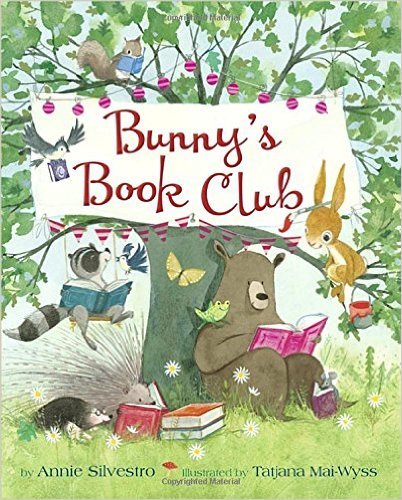
Bunny’s Book Club by Annie Silvestro (Author), Tatjana Mai-Wyss (Illustrator). I had this book book-talked to me and immediately placed it on my wish list. Yes please to a bunny that sneaks into the library through the return slot because he needs his books. Then Annie Silvestro contacted me and asked if I would like a copy of it, of course! I was not disappointed. What a great picture book to discuss the importance of library, to talk about book clubs and just to love reading.
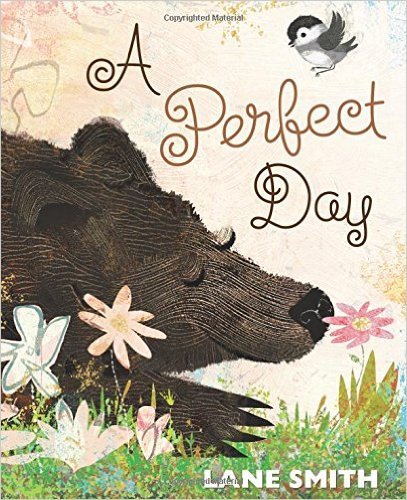
A Perfect Day by Lane Smith is a great picture book to talk about perspective. While almost all of the animals show how their day was ruined by the bear, the bear at the end shows us how his day was the most perfect day.
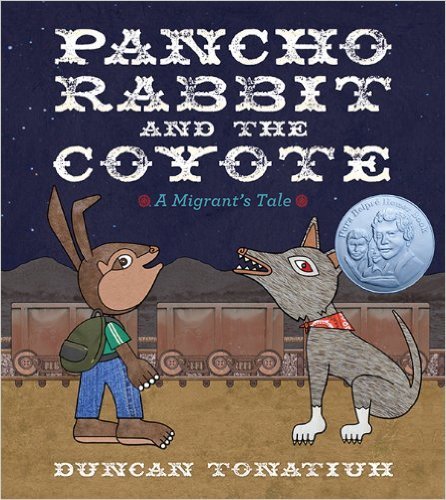
Pancho Rabbit and the Coyote: A Migrant’s Tale by Duncan Tonatiuh came out a few years ago but has just made it into our library thanks to a grant I received. This allegorical picture book is a must add for starting discussions about illegal border crossing and why anyone would risk everything to reach a better life.

You Don’t Want a Unicorn! by Ame Dyckman (Author), Liz Climo (Illustrator)
Ame Dyckman continues to amaze me with her creativity. This picture book made us laugh out loud since my own kids really do want a unicorn. Be careful what you wish for.
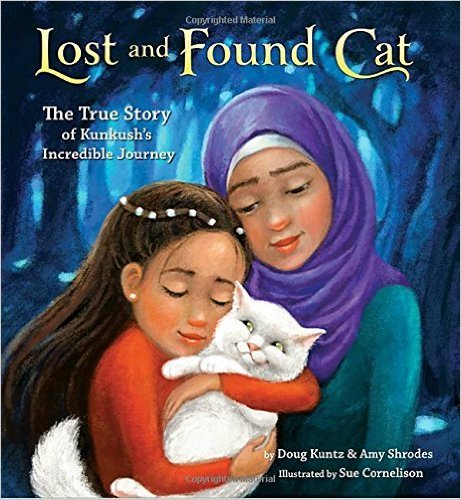
Lost and Found Cat: The True Story of Kunkush’s Incredible Journey by Doug Kuntz (Author), Amy Shrodes (Author), Sue Cornelison (Illustrator)
The true story of a cat lost and then reunited tells the larger story of a family who had to flee the dangers of Iraq becoming one of the many thousands of refugee families traveling toward safety around the world.
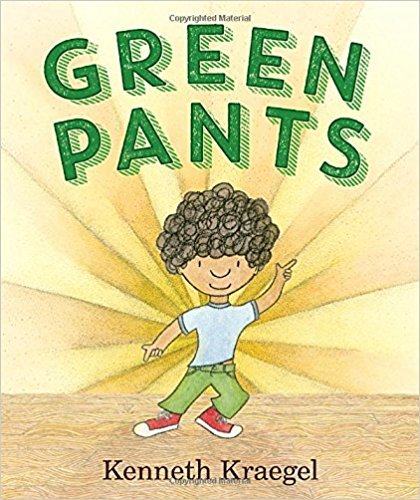
Green Pants by Kenneth Kraegel
Who cannot relate to just wanting to be yourself rather than being asked to change for others?

Out of Wonder: Poems Celebrating Poets
by Kwame Alexander (Author), Chris Colderley (Author), Marjory Wentworth (Author), Ekua Holmes (Illustrator)
Kwame Alexander can do no wrong in our classroom. I am therefore very grateful that he spearheaded this beautiful poetry collection as a way to get more students to discover poetry. Remarkable and beautiful.
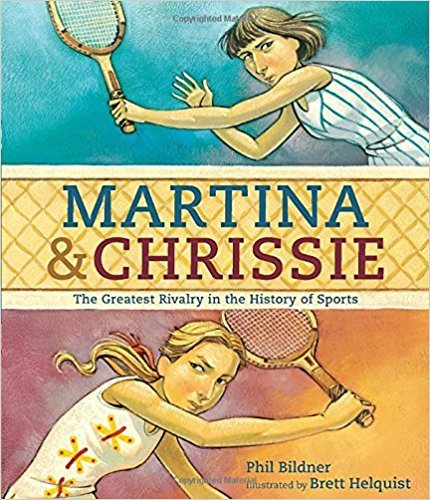
Martina & Chrissie: The Greatest Rivalry in the History of Sports by Phil Bildner (Author), Brett Helquist (Illustrator)
Several of Phil Bildner’s picture books are well-loved in our classroom, but he has outdone himself in his latest. I am so grateful for a sports picture book that not only features friendship, hard work, but also two females. There simply are not enough books out there featuring females in sports.
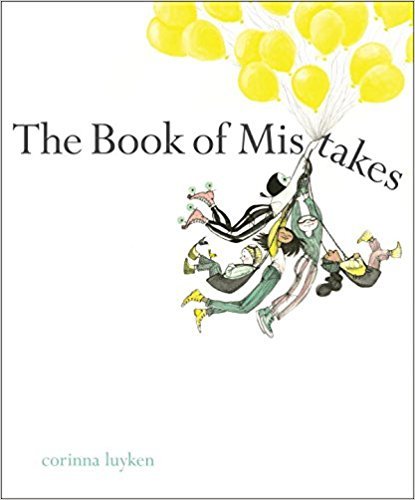
The Book of Mistakes by Corinna Luyken
How to turn mistakes into masterpieces is the message of this picture book and what a wonderful message it is.
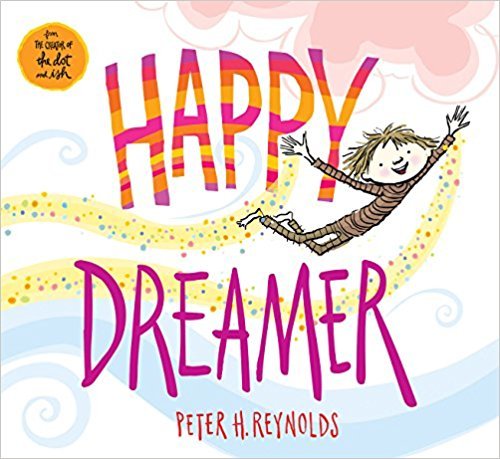
Happy Dreamer by Peter H. Reynolds
Can Peter Reynolds do no wrong? As the mother of a happy dreamer, I got teary eyed reading this book. How many of our kids need to hear their own amazing, sometimes overfilled brains, portrayed as something amazing and wonderful instead of something to be fixed?
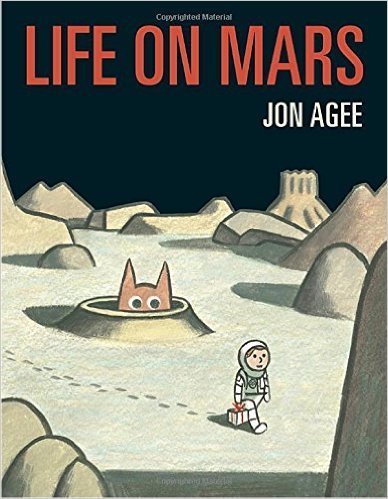
Life on Mars by Jon Agee
What a great picture book to talk about what happens when we don’t pay attention to the world around us.
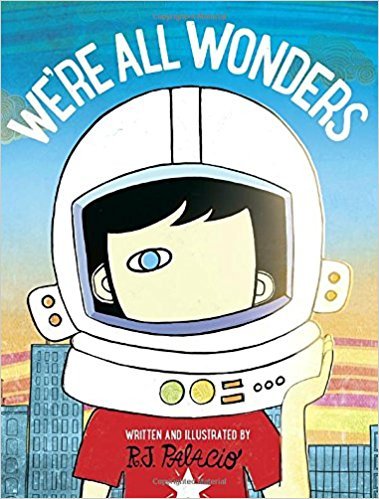
We’re All Wonders by R. J. Palacio
This picture book version of the book Wonder is on heavy rotation in our classroom, And how can it not be? The message of kindness, empathy and seeing others for everything they are is one we all need to be reminded of now and again.

It’s Not Jack and the Beanstalk by Josh Funk (Author), Edwardian Taylor (Illustrator)
I am a major fan of all of Josh Funk’s picture books but I think he may have outdone himself in this book. While it is only available for pre-order right now, I have read an F&G aloud to my 7th graders and every single time they laugh. I love how I can use this picture book as a way to discuss narrative technique as well.
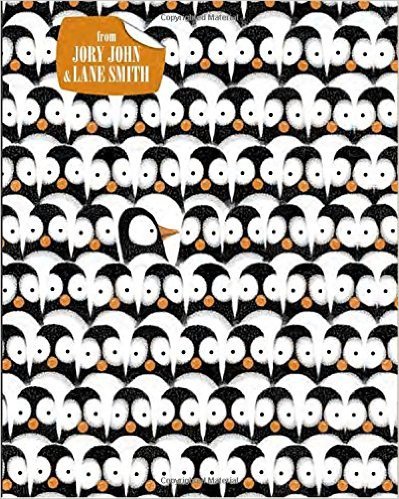
Penguin Problems by Jory John (Author), Lane Smith (Illustrator)
A picture book about a whiny penguin? Yes, please. I also love how there is what we think is an Aha moment in it and then the penguin reverts right back to its old ways. So fun to read and share.

The Legend of Rock Paper Scissors by Drew Daywalt (Author), Adam Rex (Illustrator)
Ever wonder why we play Rock, Paper, Scissors? Look no further than this picture book for the hilarious made up back story behind the game.

Jabari Jumps by Gaia Cornwall
Great picture book to use for teaching theme and also for sharing about our own fears, as well as how we can overcome them.

Maya Lin: Artist-Architect of Light and Lines by Jeanne Walker Harvey (Author), Dow Phumiruk (Illustrator)
I love that this picture book shares the story of an extraordinary female architect and how she found her inspiration. Too often our students are not exposed to stories like this.

The Black Book of Colors by Menena Cottin (Author), Rosana Faría (Illustrator), Elisa Amado (Translator)
I just discovered this book although it came out in 2008 and I am obsessed with having others include it in their library. How do you describe the color of the rainbow to someone who cannot see it? This picture book all in black and silver with raised images, text and Braille does just that.

One Plastic Bag: Isatou Ceesay and the Recycling Women of the Gambia by Miranda Paul (Author), Elizabeth Zunon (Illustrator)
A remarkable picture book that tells the tale of Isatou Ceesay and how she envisioned a creative solution to the plastic that was burying her village.

Double Take! A New Look at Opposites by Susan Hood (Author), Jay Fleck (Illustrator)
Susan Hood continues to amaze me. Again, a great picture book to discuss perspective and how everything is relative to each other. So if you think you know opposites, think again.
There you have it, another batch of incredible picture books waiting for us to read and share them. If you would like to stay up to date on recommendations, follow me on Instagram where I do just that.
If you are wondering what other books we love in room 235D, please go here.
Filed under: being a teacher, books, picture books, Reading





